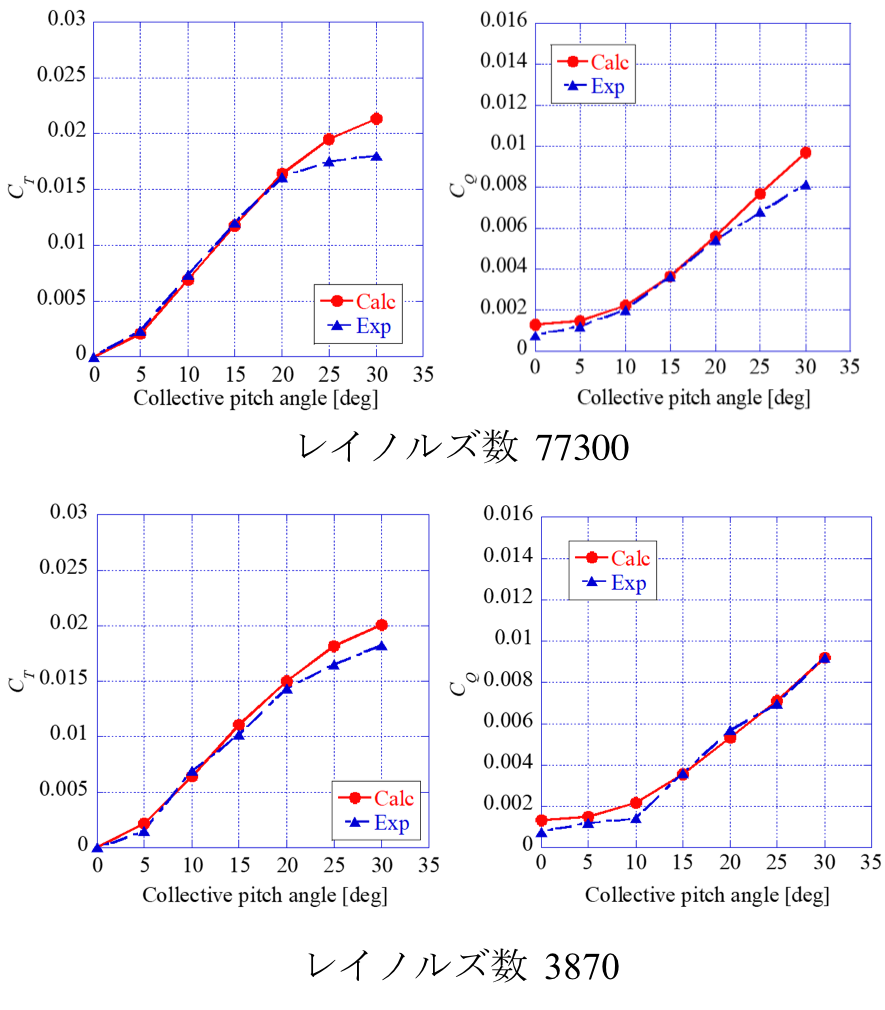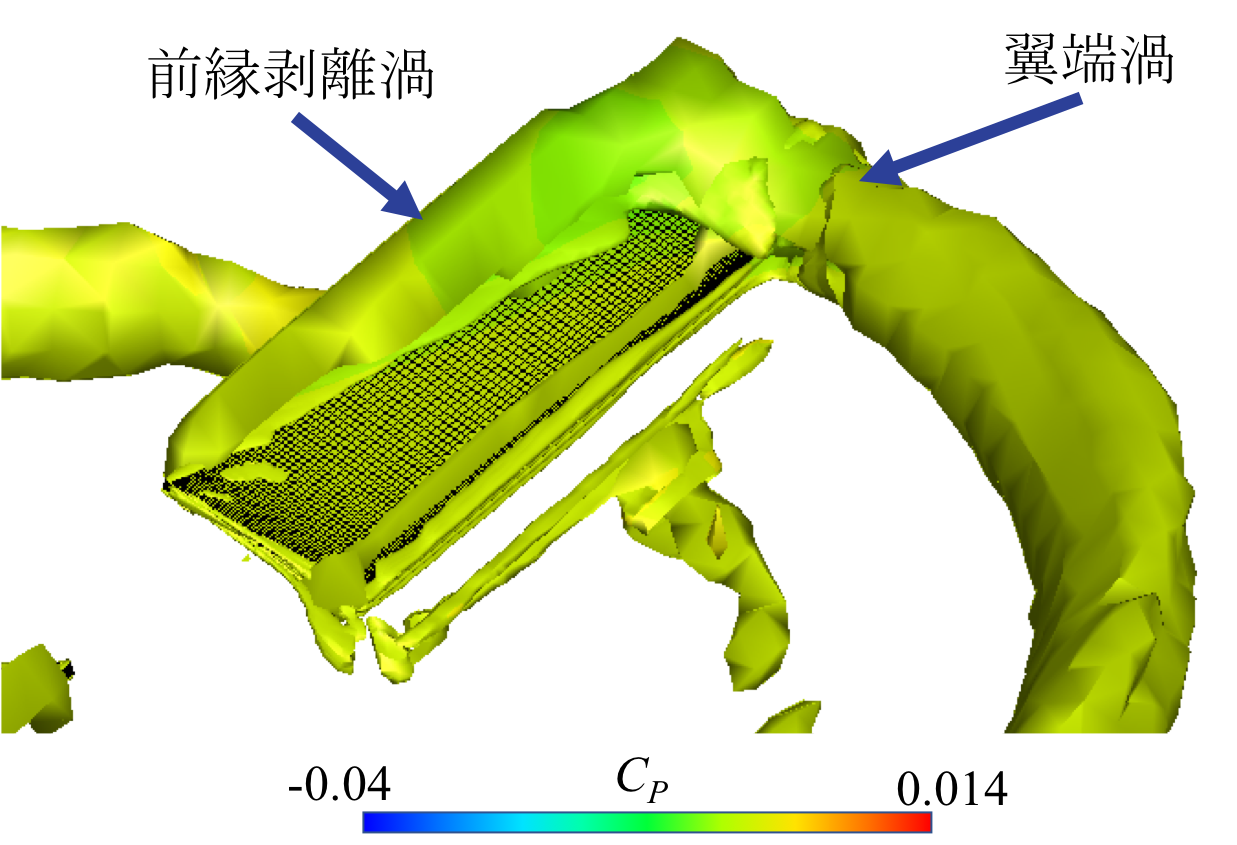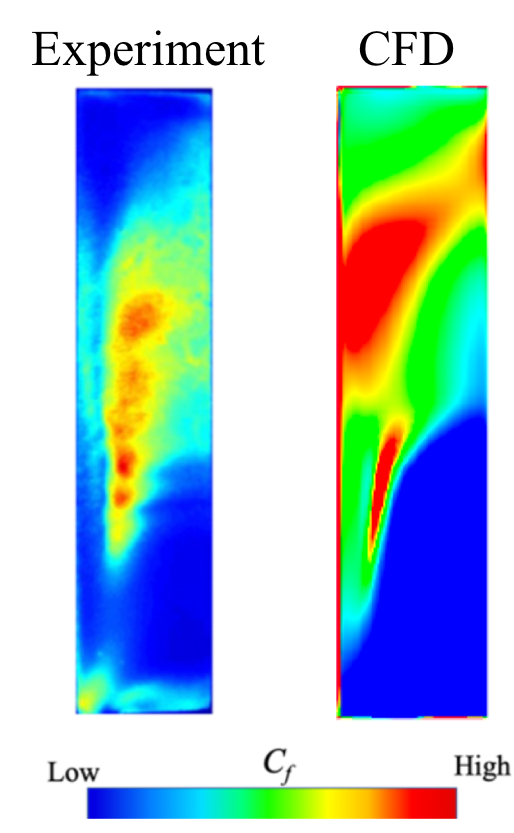Numerical Study on Rotor Performance of Mars Helicopter
JAXA Supercomputer System Annual Report April 2018-March 2019
Report Number: R18EACA41
Subject Category: JSS2 Inter-University Research
- Responsible Representative: Makoto Sato, Associate Professor, Kogakuin University
- Contact Information: Makoto Sato, Kogakuin University(msato@cc.kogakuin.ac.jp)
- Members: Makoto Sato, Daichi Ogasawara, Yodai Suzuki
Abstract
Mars helicopter project is now going. Since the atmospheric density on Mars is about 1/100, the sound of speed is about 3/4 compared with those on Earth, we need to develop the high performance heli-rotor. In JAXA, the experimental measurements of the heli-rotor performance at low-Reynolds number condition have been conducted. In the present research, we conduct numerical simulations on the rotational flat-plate-airfoil flow in order to clarify the characteristics of the flow field.
Reference URL
N/A
Reasons for using JSS2
We need to conduct the large-scale simulations on the rotational wing flow using “rFlow3d”, which has been developed in JAXA.
Achievements of the Year
We have conducted the numerical simulation on the rotational flat-plate-airfoil flow. The computational object and conditions are decided based on the experiments at Tohoku University[1].
Figure 1 shows the schematic diagram of computational objects. The computational parameters are the Reynolds number(3,870-77,300), angle of attack(0-30) and aspect ratio(2-4). Here, the results of AR=4 cases are shown. The flow solver is rFLow3D, which has been developed at JAXA.
Figure 2 shows the coefficients of thrust and torque with experimental data. The simulation results are good agreement with those of experiment, except for the large angle of attack cases. Figure 3 shows vortex structures around flat-plate-airfoil. The leading-edge vortex and tip vortex can be observed. These vortices are interacted with each other. Figure 4 shows the coefficients of surface friction with experimental data. The simulation results are good agreement with that of experiment.
These results indicate that the present simulations are sufficiently reliable.
[1] Okoucuhi, M. “Experimental research on aero-characteristics of rotor at low-Reynolds number condition”, Master Thesis of Tohoku University, (2013).
Publications
– Oral Presentations
Daichi Ogasawara, Makoto Sato, Yasutada Tanabe, Hideaki Sugawara, “Numerical simulations on rotational flat-plate-airfoil flow using rFlow3D”, 1st Symposium on Mars helicopter, 2019.
Usage of JSS2
Computational Information
- Process Parallelization Methods: N/A
- Thread Parallelization Methods: OpenMP
- Number of Processes: 1
- Elapsed Time per Case: 400 Hour(s)
Resources Used
Fraction of Usage in Total Resources*1(%): 0.17
Details
Please refer to System Configuration of JSS2 for the system configuration and major specifications of JSS2.
| System Name | Amount of Core Time(core x hours) | Fraction of Usage*2(%) |
|---|---|---|
| SORA-MA | 881.82 | 0.00 |
| SORA-PP | 269,181.44 | 2.15 |
| SORA-LM | 0.00 | 0.00 |
| SORA-TPP | 0.00 | 0.00 |
| File System Name | Storage Assigned(GiB) | Fraction of Usage*2(%) |
|---|---|---|
| /home | 19.07 | 0.02 |
| /data | 19,531.26 | 0.34 |
| /ltmp | 3,906.25 | 0.33 |
| Archiver Name | Storage Used(TiB) | Fraction of Usage*2(%) |
|---|---|---|
| J-SPACE | 0.00 | 0.00 |
*1: Fraction of Usage in Total Resources: Weighted average of three resource types (Computing, File System, and Archiver).
*2: Fraction of Usage:Percentage of usage relative to each resource used in one year.
JAXA Supercomputer System Annual Report April 2018-March 2019






